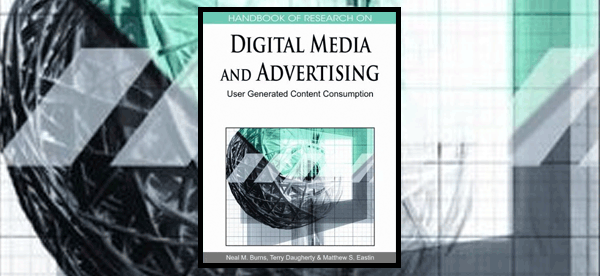TeachAids research published in handbook on digital media and advertising
The Handbook of Research on Digital Media and Advertising: User Generated Content Consumption was recently published and features a chapter by TeachAids founder and CEO, Dr. Piya Sorcar, and TeachAids board member, Professor Clifford Nass from Stanford University. The chapter focuses on the research behind the initial development of the TeachAids products and organization, and outlines ways to utilize interactive media to provide effective education to populations despite social and cultural barriers.
Book Description: Media professionals today are facing numerous changes within mass media that will continue to impact the creation and delivery of persuasive messages. The Handbook of Research on Digital Media and Advertising: User Generated Content Consumption bridges the gap between professional and academic perceptions of advertising in new media environments through defining the evolution of consumerism within the context of media change. Containing findings from international experts, this Handbook of Research provides coverage of practical issues related to consumer power shifts, economic issues related to media exposure, and definitions to understand the dynamics involved with consumerism.
Chapter Abstract: Solving the problem of how to provide effective health education on diseases subject to social taboos is an immediate need. The social stigma of HIV/AIDS is particularly prominent in the developing world, where 95 percent of all HIV-infected persons live. Millions of people risk death from HIV/AIDS while cultures and laws resist change. New approaches must be created to provide education despite whatever social, structural, cultural, and legal barriers exist. Fortunately, the emergence of new media and information and communication technologies (ICT) has provided new ways to help bypass social taboos and provide effective education. This chapter discusses these challenges and presents criteria for evaluating the efficacy of educational campaigns aimed at promoting awareness relating to taboo topics using a specially designed HIV/AIDS curriculum—Interactive Teaching AIDS—as an exemplar. It incorporates key pedagogical and communication theories and approaches in order to maximize its efficacy. To provide psychological comfort and promote coherent understanding, this ICT-based application couples the presentation of biological aspects of transmission with culturally-familiar euphemisms and metaphors to communicate ideas about prevention measures. Created using a rigorous, iterative, and research-based process, the 20-minute application provides detailed yet accessible culturally-appropriate explanations of all key aspects of HIV/AIDS prevention. For people living in areas that cannot easily access explicit HIV/AIDS materials due to social, cultural or other constraints, the positive results of the authors’ study suggest that it is possible to design curricula that are socially-acceptable and accurate, that promote significant gains in learning, retention, and changes in attitudes. Furthermore, these materials can encourage learners to proactively seek more information regarding the taboo topic and share prevention information with others. Educators who are reticent to teach about such subjects due to embarrassment or lack of health expertise can utilize similar approaches to educate students.
The book is now available on amazon.com and barnesandnoble.com.
